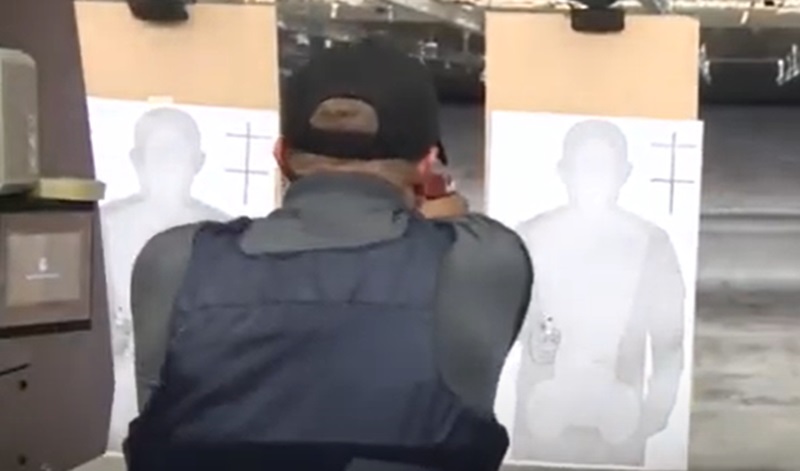
In September of 2024, Colorado State Patrol Corporal Tye Simcox engaged in a brief shootout with a suspect along U.S. Highway 36 in the Denver suburb of Westminster along the major route to Boulder. Simcox was parked in the center median in a marked patrol pickup truck on a Saturday afternoon when he received gunfire from a passing truck. The driver of the truck, identified as Victor Anthony De Santiago, 32, shot several rounds into the patrol vehicle, striking the officer in the arm.
The man then pulled over to the shoulder, exited the pickup truck, and began firing at the Simcox’s windshield. Corporal Simcox got out of his vehicle with his patrol rifle, took cover behind his truck, and fired several rounds at the shooter who was pronounced dead at the scene.
Police firearms training is often depicted, and often conducted, on pleasant sunny days at the agency’s range. On command, the officers lined up in their designated shooting lanes and pulled the trigger intending to punch holes close together on a target that consists of the silhouette of a human torso. The oval rings on a target model B27 start around the center, marked with an X, and get larger in five additional rings. The results are assigned a score based on the location of the hits, with no credit given for any shots outside of the shadowy target.
This kind of marksmanship training, which is basic and essential, is just the beginning of an officer’s proficiency with firearms. As clearly illustrated by the dynamics of the ambush on the Colorado Trooper, hitting an X on a fun day at the range does not prepare an officer for the reality of deadly force.
Today’s officers have increasing options for the weapons systems available to them. The word system is used rather than just the word firearm, because even the duty weapon carried on the equipment belt may have a variety of functions. Many officers are now carrying semi-automatic handguns with laser sights to put a red or green dot on a potential target. The sidearm may also have affixed a flashlight to illuminate a target in low-light situations. These weapons are carried in specially designed holsters that may require several steps to release the gun to avoid having it taken away by an assailant.
The classic 12-gauge shotgun was a fixture in most patrol cars of the past. Either stored in the trunk, mounted upright next to the driver, or attached above the head on the protective screen, this powerful weapon could destroy a lock or do major damage to a human adversary with buckshot that showered multiple bullet-sized projectiles on its target. The disadvantage of the shotgun is its increasing inaccuracy with distance. The patrol rifle has supplemented or replaced the shotgun in many agencies with its versatility and accuracy at longer distances.
Learning to shoot, move, take cover, and make deadly force decisions are part of firearms training. Various training tools are available to develop these skills. Life size projections have evolved from simulators that show various scenarios with laser activated screens that freeze if the specially equipped practice gun hits the intended target to show where the round would have struck in real life, to virtual reality that allows the trainee to incorporate verbal commands into the scenario.
So-called Hogan’s Alley shoot houses are 3D structures that allow officers to train in building searches, hostage rescue, and SWAT raids. Hogan’s Alley was from an old comic strip The Yellow Kid” set in a rough neighborhood, so the FBI used the name when it developed a realistic street scene with the help of Hollywood set directors in modern iterations of the mock towns used for training agents since the 1940s.
Laser guns and vests that alert when hit by the beam have been used in training to give realism to the prospect of being shot by an adversary. Simulated ammunition rounds in specially marked but fully functional training guns are used in training scenarios using real actors. Trainees who get hit feel the sting of the round for a memorable lesson in keeping out of the line of fire. Less expensive is the use of recreational paintball guns that leave a mark.
Getting the full experience of the noise of gunshots, the stress on the body, the decision to pull the trigger, and marksmanship under extreme physical stress is always limited even with the most sophisticated training tools. But every rehearsed movement can mean the difference between life and death in a real gun battle.
Make a difference. Support the NPA.